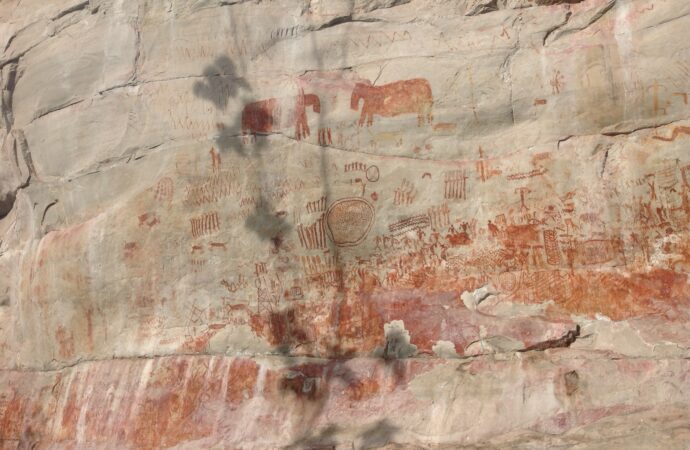A team of British-Colombian Archaeologists discovered, recently, an important collection of rock art from 12,500 years ago in the cliffs of Serranía de la Lindosa, Colombia.

The giant rock art depicts geometric shapes, humans, and ice age animals, such as the mastodon and the palaeolama. Researchers believe that the vibrant red pictures were drawn by the community of hunter-gatherers that inhabited the region for over hundreds, maybe even thousands, of years.
The Colombian Amazon: a Jungle Mystery
The researchers’ team, led by Jose Iriarte, aims to go back and face once again the jungle natural wilderness, as soon as the public health travel measures due to the current covid-19 pandemic are relaxed.
In an interview for the University of Exeter, Professor Iriarte said that “these rock paintings are spectacular evidence of how humans reconstructed the land and how they hunted, farmed and fished. It is likely art was a powerful part of the culture and a way for people to connect socially. The pictures show how people would have lived amongst giant, now extinct, animals, which they hunted.”
On December 12th, the British television programme “Jungle Mystery: Lost Kingdoms of the Amazon” will air an episode dedicated to the Colombian rock art, on Channel 4.
The archaeological research has been funded by the European Research Council and was made possible thanks to the peace treaty signed between the FARC guerrillas and the Colombian government.
Image Credit: Parques Nacionales Naturales de Colombia
Sources:
– Morcote-Ríos, Gaspar, et al. “Colonisation and early peopling of the Colombian Amazon during the Late Pleistocene and the Early Holocene: New evidence from La Serranía La Lindosa.” Quaternary International (2020).
– University of Exeter





